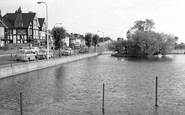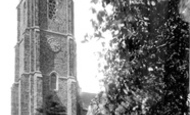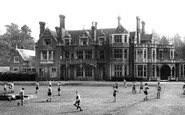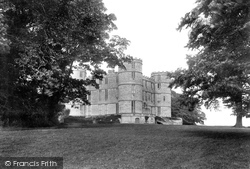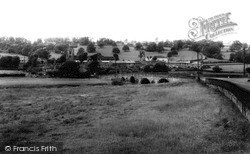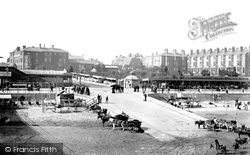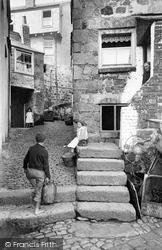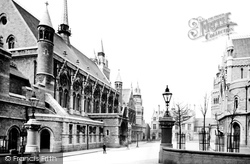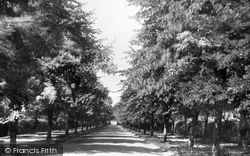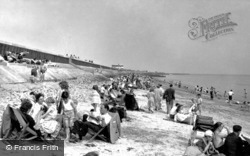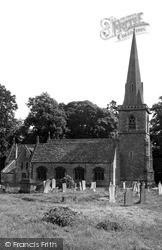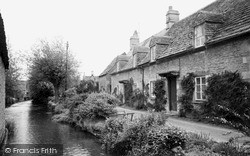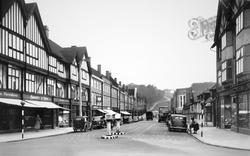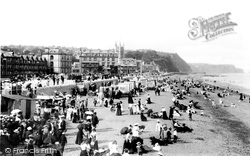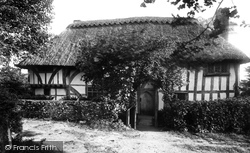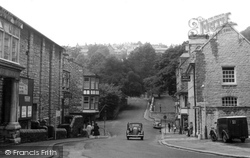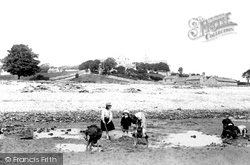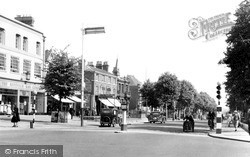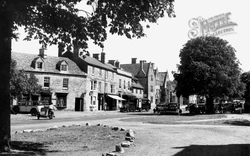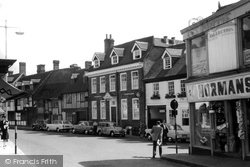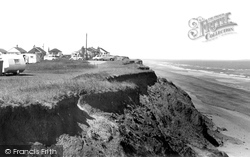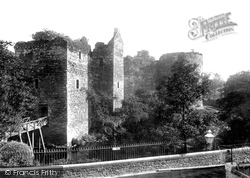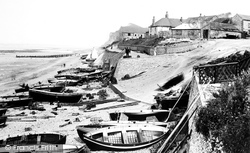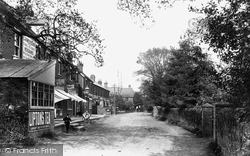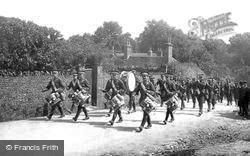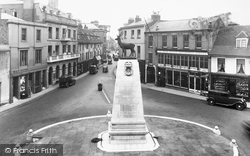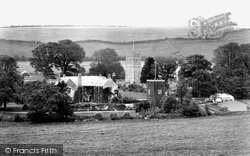Places
18 places found.
Those places high-lighted have photos. All locations may have maps, books and memories.
- Hythe, Kent
- Hythe, Hampshire
- Small Hythe, Kent
- Bablock Hythe, Oxfordshire
- Methwold Hythe, Norfolk
- Hythe, Somerset
- Hythe, Surrey
- Hythe End, Berkshire
- The Hythe, Essex
- Egham Hythe, Surrey
- West Hythe, Kent
- New Hythe, Kent
- Broad Street, Kent (near Hythe)
- Horn Street, Kent (near Hythe)
- Newbarn, Kent (near Hythe)
- Newington, Kent (near Hythe)
- Broad Street, Kent (near Hythe)
- Stone Hill, Kent (near Hythe)
Photos
360 photos found. Showing results 721 to 360.
Maps
101 maps found.
Books
10 books found. Showing results 865 to 10.
Memories
4,406 memories found. Showing results 361 to 370.
Abc Minors,Trolley Buses, Lonesome School, Oakleigh Way
I have just found this page and what memories it rekindles. I was a minor at the ABC, I even got a road safety prize from Coco the Clown. Thorpes record shop accross the road, there I bought my ...Read more
A memory of Mitcham in 1955 by
Air Raids
These memories are as fresh in my mind as if they happened last week. Boston had its share of air raids, the first one was on a rainy Monday, it was July, the first day of our summer school holidays. It would be about 7.15 am when we ...Read more
A memory of Boston in 1940 by
Evacuee
My mother was evacuated to Bishop Nympton ( but going to school in South Molton) She arrived with her mother and her brand new baby sister sometime during the War...I don't know the year right now, I need to find out. They were ...Read more
A memory of South Molton by
Sweeping Staircase
I also have memories of St Nicholas, and was a pupil at the school from 1949 aged four, till 1952. Miss Garrard was the headmistress, and I seem to remember she was very kind. I had a kindergarten teacher who was absolutely ...Read more
A memory of Mickleham in 1949 by
Happy Days 1950s And 60s
I was born and brought up in Weaverham until I left to move to Altrincham with my new wife (and job). Over that 20 year period I have so many happy memories; too many to record in 1000 words. Lived in Lime Avenue all ...Read more
A memory of Weaverham by
Billys Greengrocer
Billy's Greengorcer - a small shop on the corner of Hebron Street where you could buy fruit and veg, and almost anything else. In those years there was not an awful lot of choice.. two lots of potatoes, carrots, cauliflower, and ...Read more
A memory of Heyside in 1951 by
The War Years
I was born in Ryde in 1938 and when war broke out, my mother and myself moved in with my grandparents, Laurence and Lucy Stroud (nee Meecham) into what is now Wellwood Grange but in those days was just Wellwood. It was the home of ...Read more
A memory of Binstead by
My Memories Of Selly Oak And Bournbrook
I was born Anne Shirley Crofts back of 622 Bristol Road (opposite where Aldi is now) in July 1944, brother Ronnie was born 1940, sister Vivienne was born 1942, and Alan was born 1947, between Riverton Road ...Read more
A memory of Selly Oak in 1954 by
Visits By The Family
I can remember that my family visited the Fox and Hounds frequently earlier than this date, but this was the first date I was legally allowed to partake of the amber fluid. I can remember the old artifacts, like ...Read more
A memory of Old Burghclere in 1958 by
Captions
4,899 captions found. Showing results 865 to 888.
George III gave his friend Thomas Weld permission to build a Catholic place of worship here by the castle - the first church of that faith built openly since the Reformation.
This fine, four-arched bridge over the River Aire at Kildwick, between Keighley and Skipton, was built by the canons of Bolton Priory in the early 14th century.
The grand Victorian hotel catering for the wealthy dominates the sky-line to the top left, mirrored by the terrace of cheaper B and Bs on the right.
On the right is part of the Marine Dealers' Stores run by the famous St Ives 'naive' painter Alfred Wallis. Works of Wallis's can be seen at the St Ives Tate Gallery.
The Guildhall (left) and Municipal Buildings (right, containing the Lord Mayor's Parlour) were opened in 1874 by the Prince of Wales, who later became Edward VII.
Owned by the Duke of Norfolk, the 52 acres of Norfolk Park had been open to the citizens of Sheffield since 1841.
A raised sea wall now protects the land behind from encroachment by the sea, but is being used as a backrest by some of the holidaymakers.
But the whole composition still sits comfortably on its more ancient foundations close by the old manor house.
South Cerney has some delightful street names, such as Bow Wow, close by the Old George Inn, and Upper Up, which now adjoins the village proper, but a reminder of the days when it was an outlying farming
By the 1950s, new buildings have begun to overshadow the road. Barker's timber yard occupies the low range of buildings on the right.
The early Saxon town was attacked several times by Danish raiders, was destroyed by the French in 1340 and 1690, and badly bombed during the Second World War.
It was the first property acquired by the National Trust, who paid £10 for it in 1896 - and then another £300 to restore it.
It was owned by the Borwick family - Mr Borwick lost all his clothes in the fire, and had to borrow replacements.
The buildings by the road into the village on the right are much altered.
Few would dare to venture onto the roads in the vulnerable contraption driven by the man on the right.
By the 1950s, with the advent of popular motoring, Broadway was starting to attract car-borne tourists in considerable numbers.
In the centre is Dorset House, now taken over by the Dorset Arms for extra accommodation.
However, judging by the parked cars and caravans, the visitors are quite happy just to look at the magnificent view over the cliff top.
An earlier castle on this site was captured in 1263 by the Norse and was subsequently demolished, allegedly on the orders of Robert the Bruce. A new, stronger fortress was then built in its place.
Throughout the 1890s the village developed into a seaside resort, sparked off by the building of two hotels, the Grand and the Sheringham.
Liphook had begun to expand by the time this photograph was taken; its streets were characterised by neat rows of Victorian and Edwardian houses.
How many of these men came back by the end of the following year? Frensham is known for its ponds and its common - now Frensham Country Park.
The war memorial, surmounted by the stag, which is the county symbol, stands at the junction of St Andrews Street and Fore Street.
It was replaced by St Peter's, designed by R T Hookway and consecrated by the Bishop of Exeter on 28 June 1890.
Places (18)
Photos (360)
Memories (4406)
Books (10)
Maps (101)

